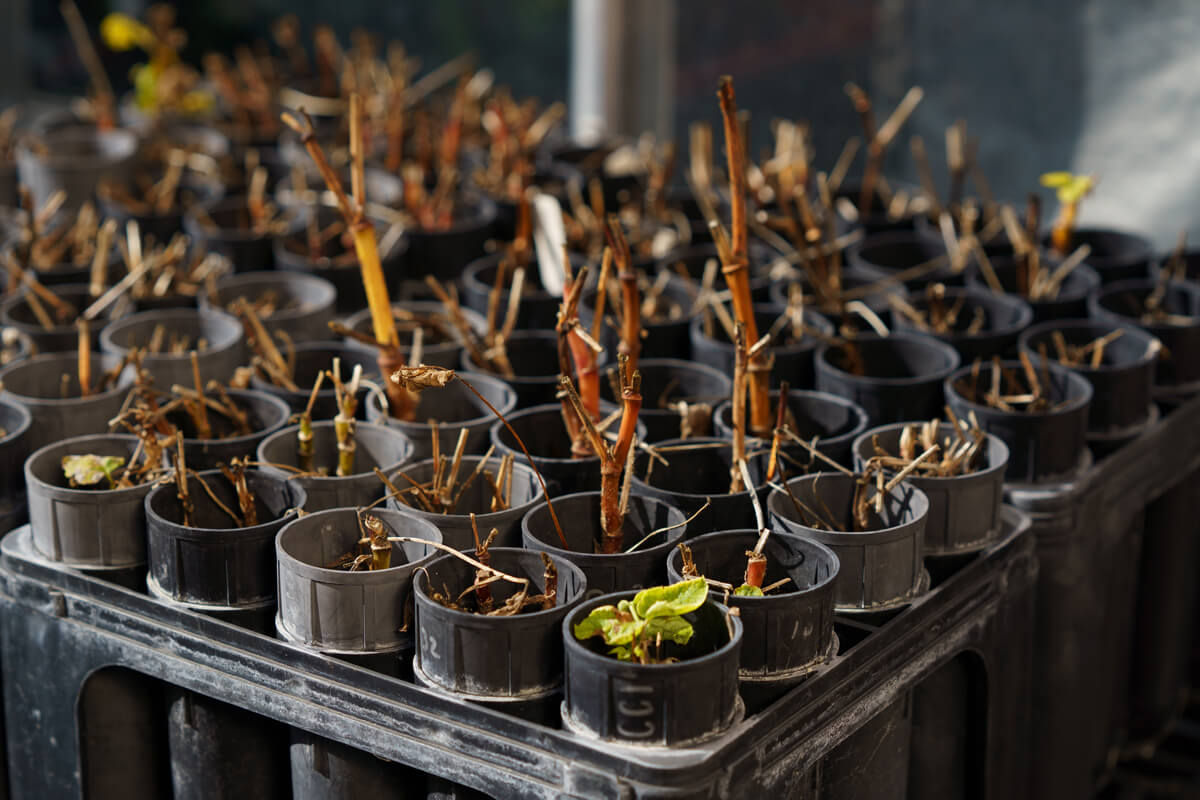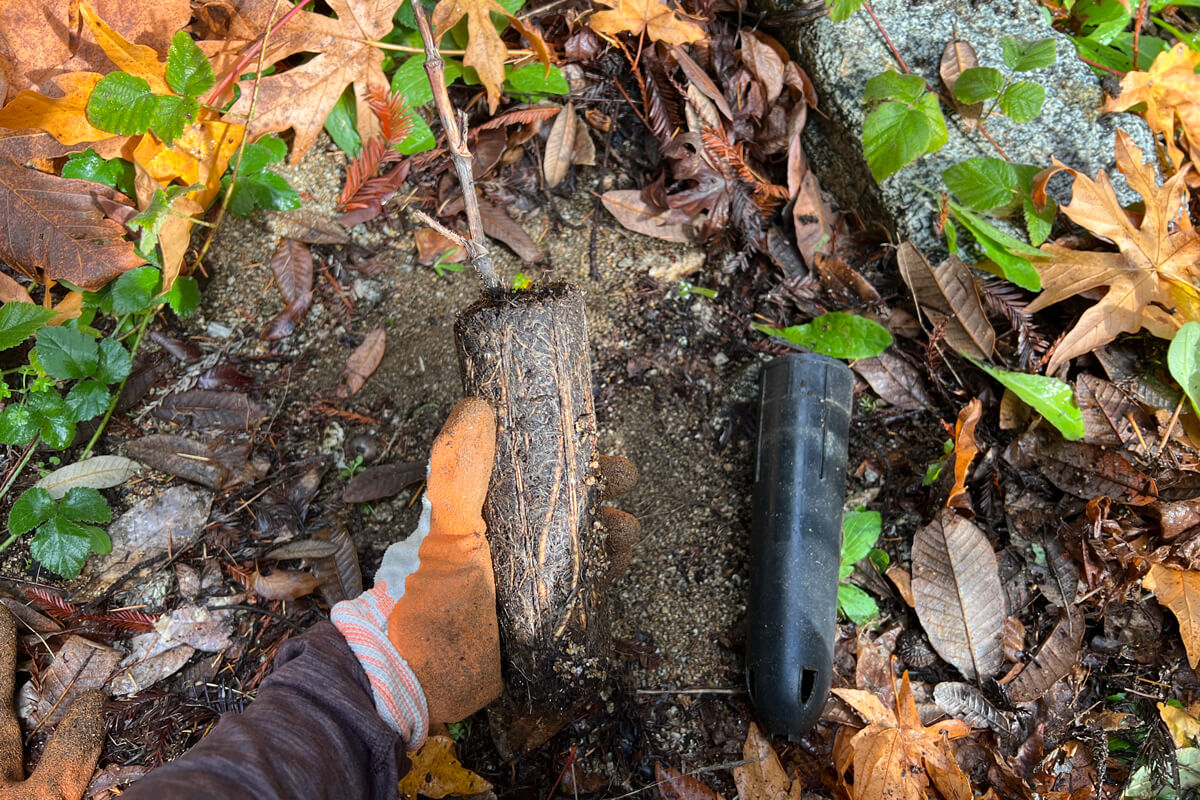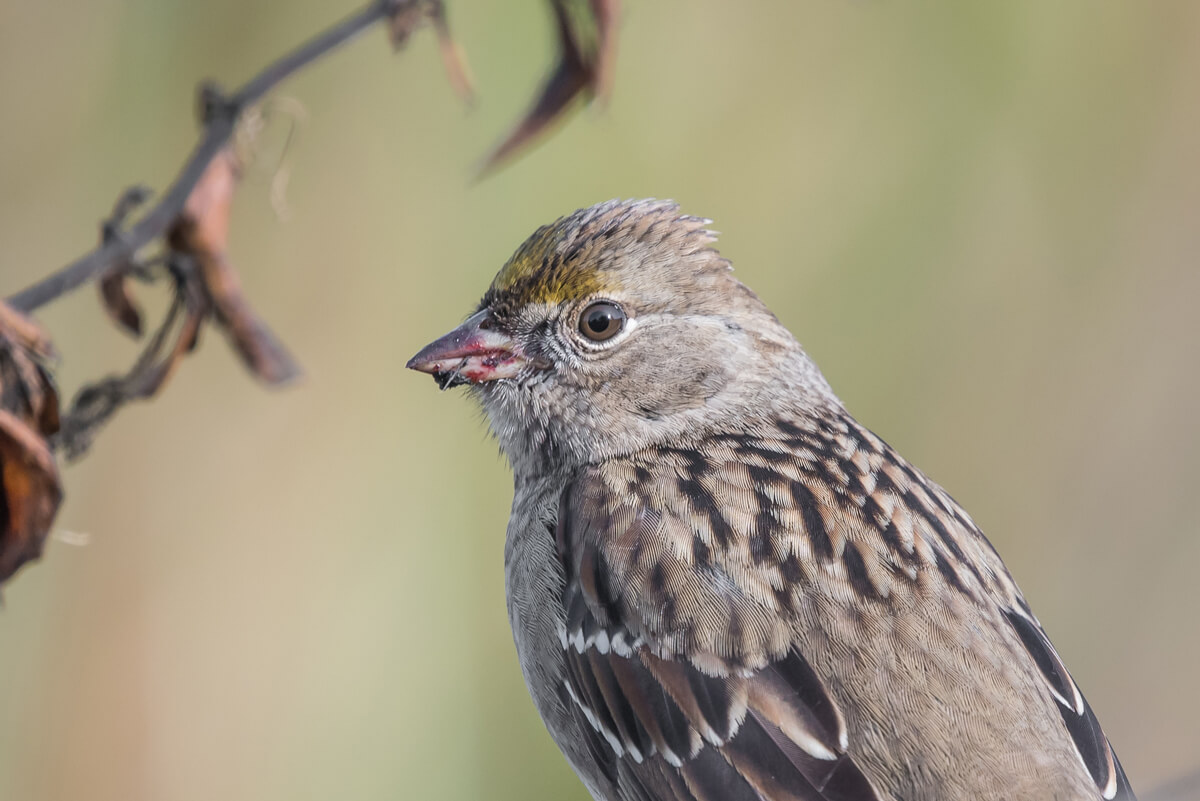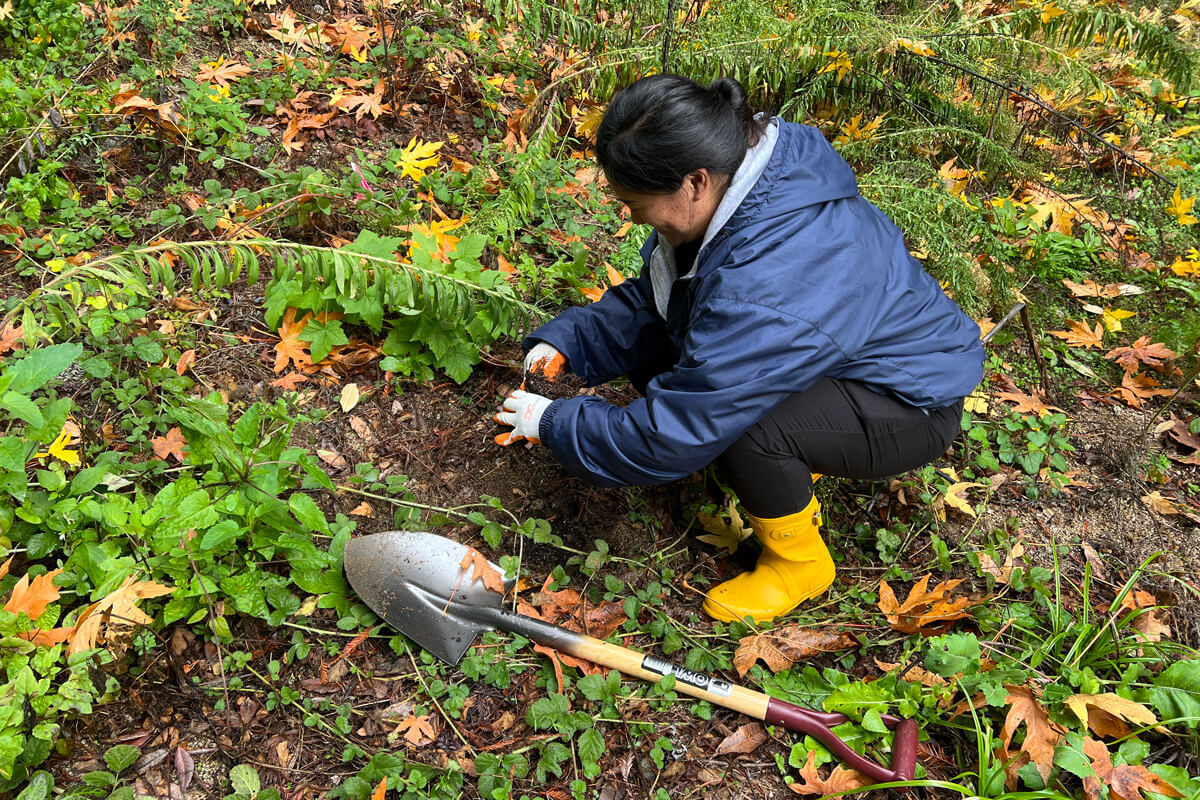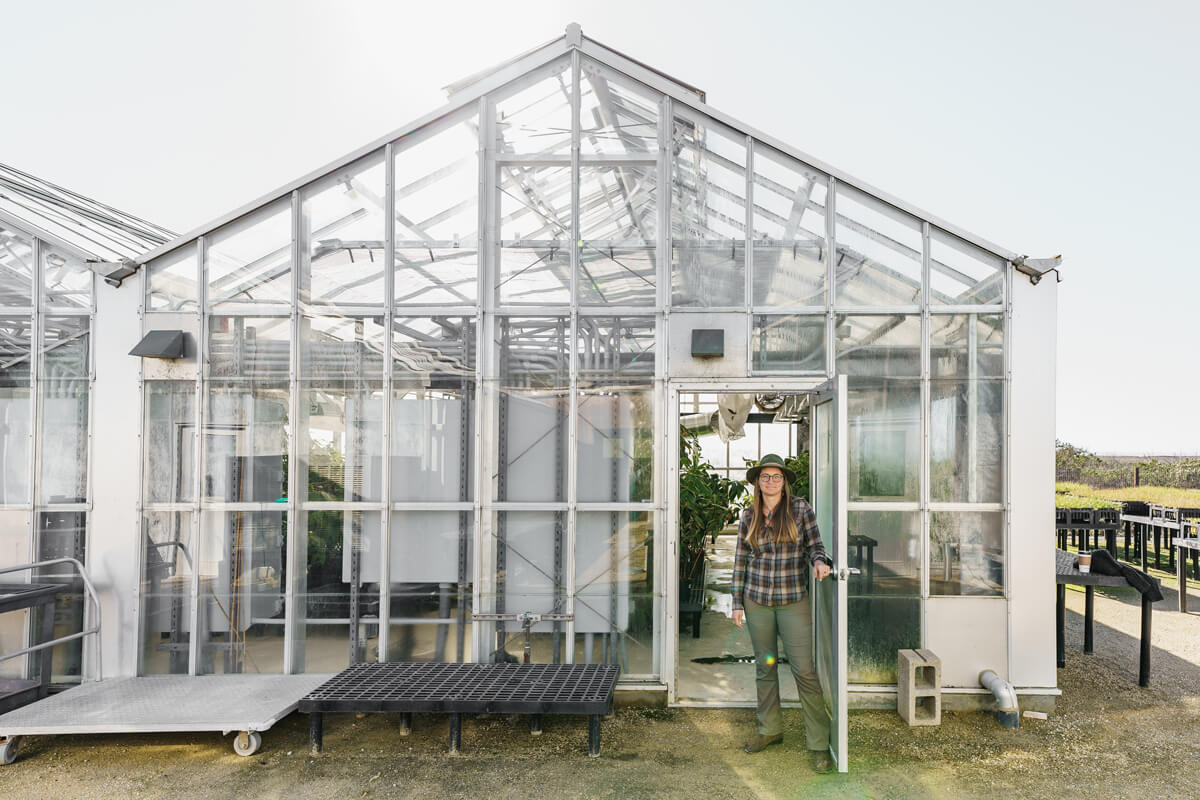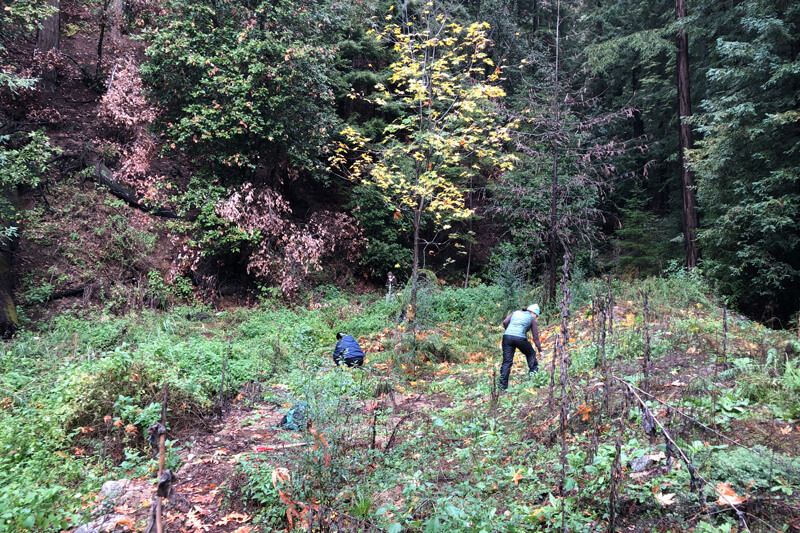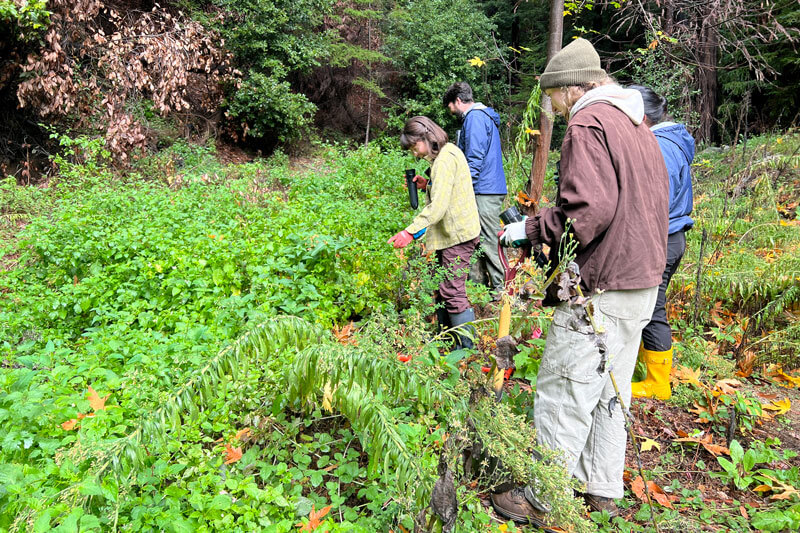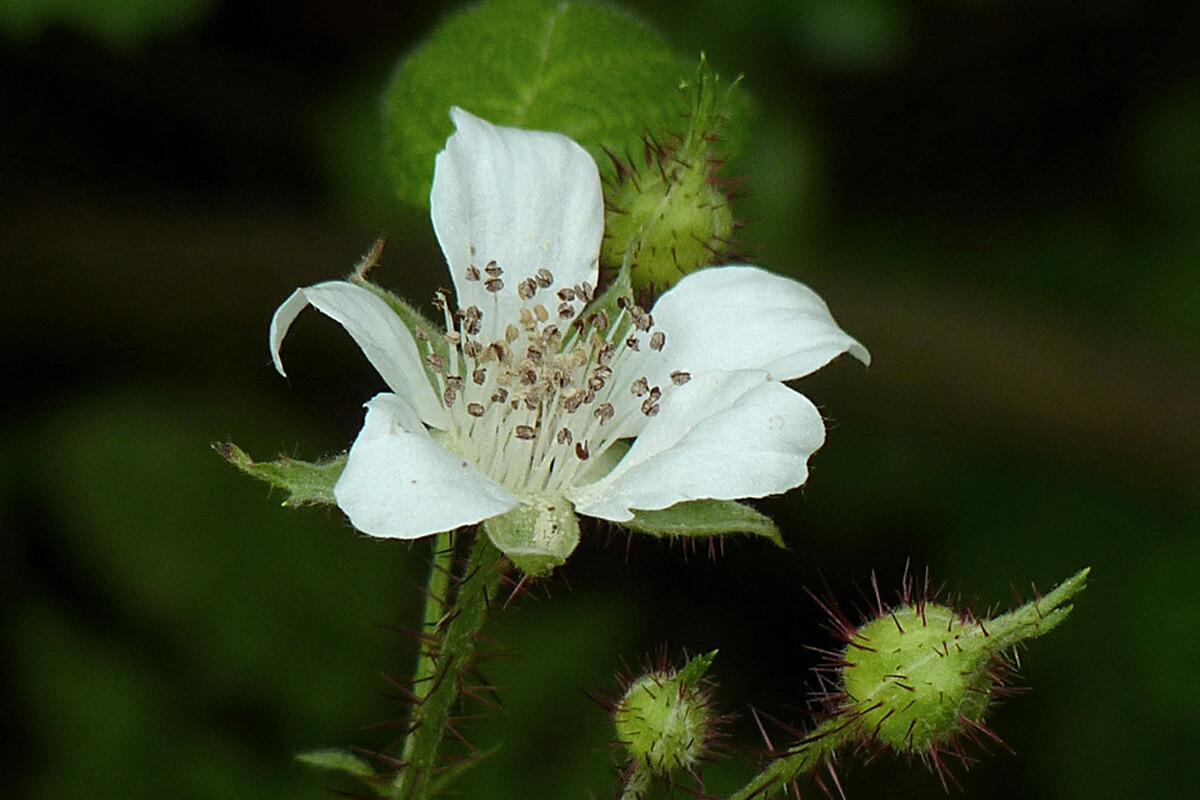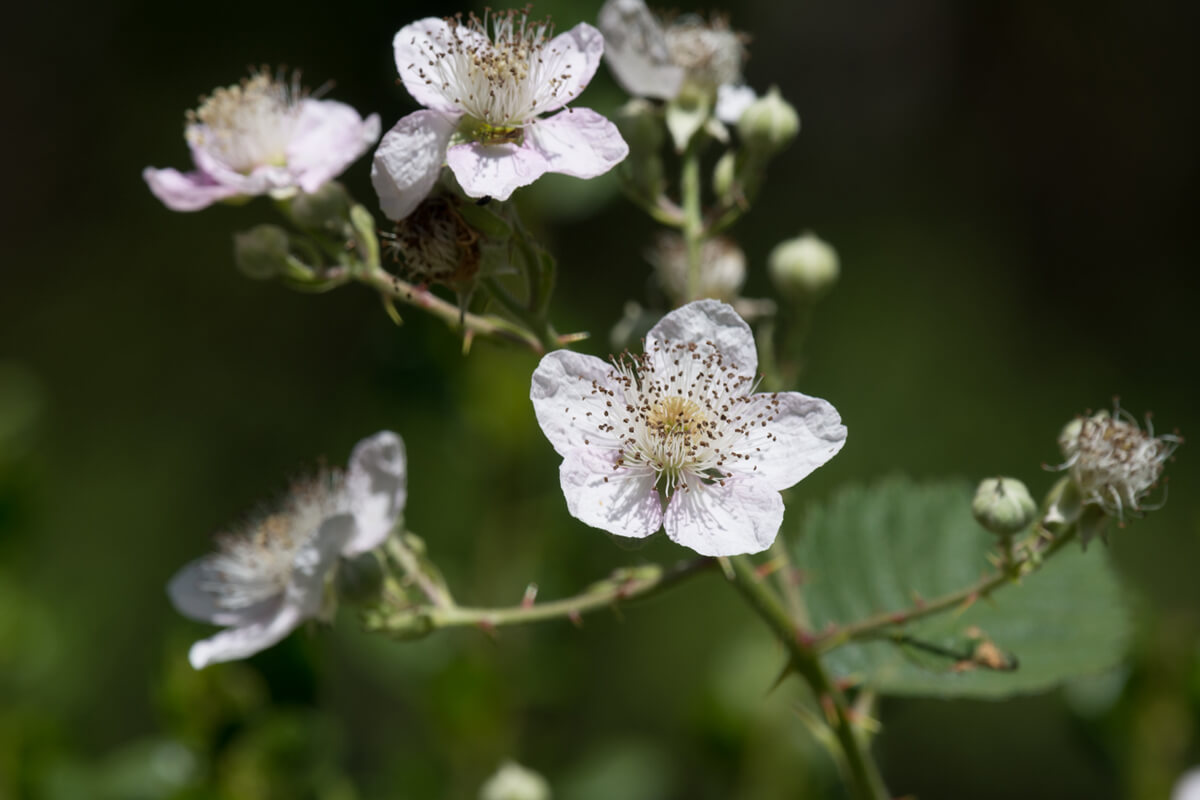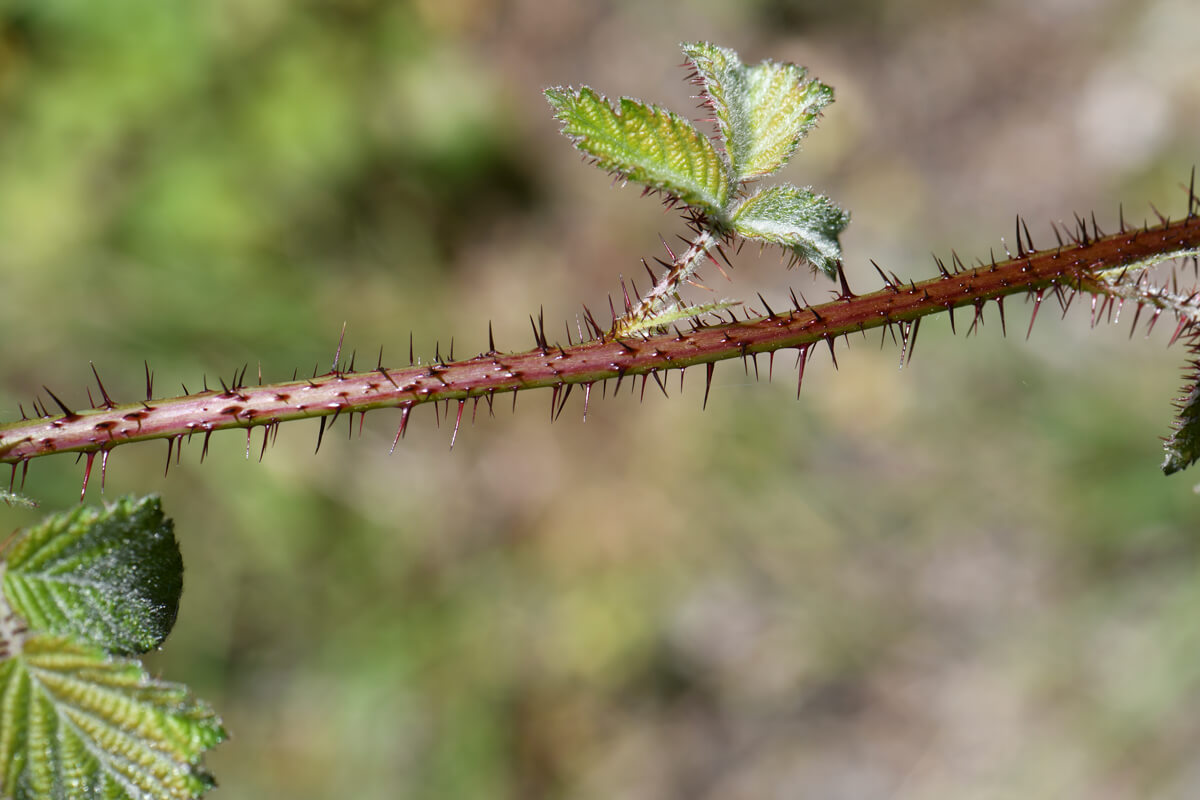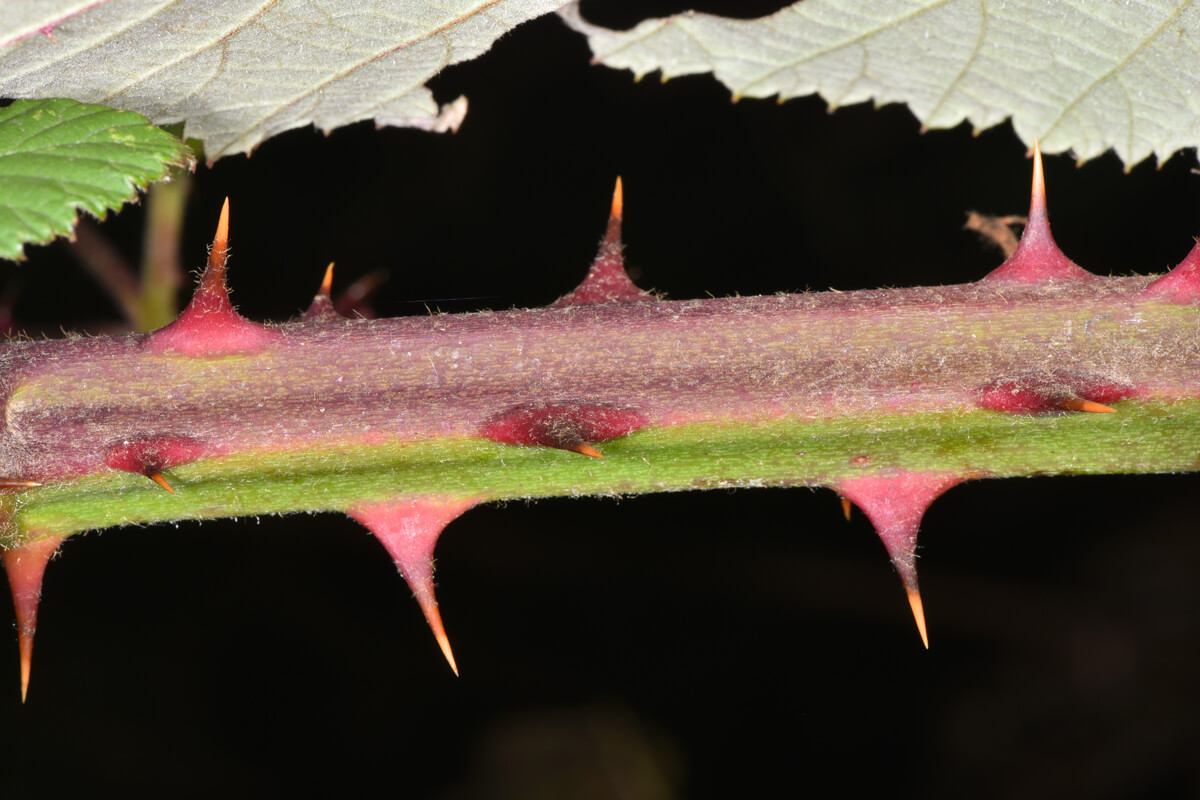The Seedling Saga
photo by Orenda Randuch.
Natives and Invasives
Native plants–evolved specifically to survive with the soil, weather, plants, animals, insects, and fungi around them–help provide food, habitat, soil nutrients, and clean water in their local ecosystem. But native plants have been drastically reduced over the last two centuries as people brought crops, grasses, trees, decorative plants, and possibly some accidental stowaways with them from their homelands as they colonized, settled, and immigrated to the United States.
Today, we have a better understanding of the impacts introducing new species can have on an ecosystem not equipped through coevolution to keep them in check and the local web of life balanced. Removing invasive species like Clematis vitalba and French broom (Genista monspessulana) that can quickly overtake the landscape and its native inhabitants is a critical ongoing struggle as we care for protected lands and restore native plants to the habitat for insects, wildlife, and the plant community. But major disasters aside, the process of planting native plants may not be as simple and straightforward as one thinks.
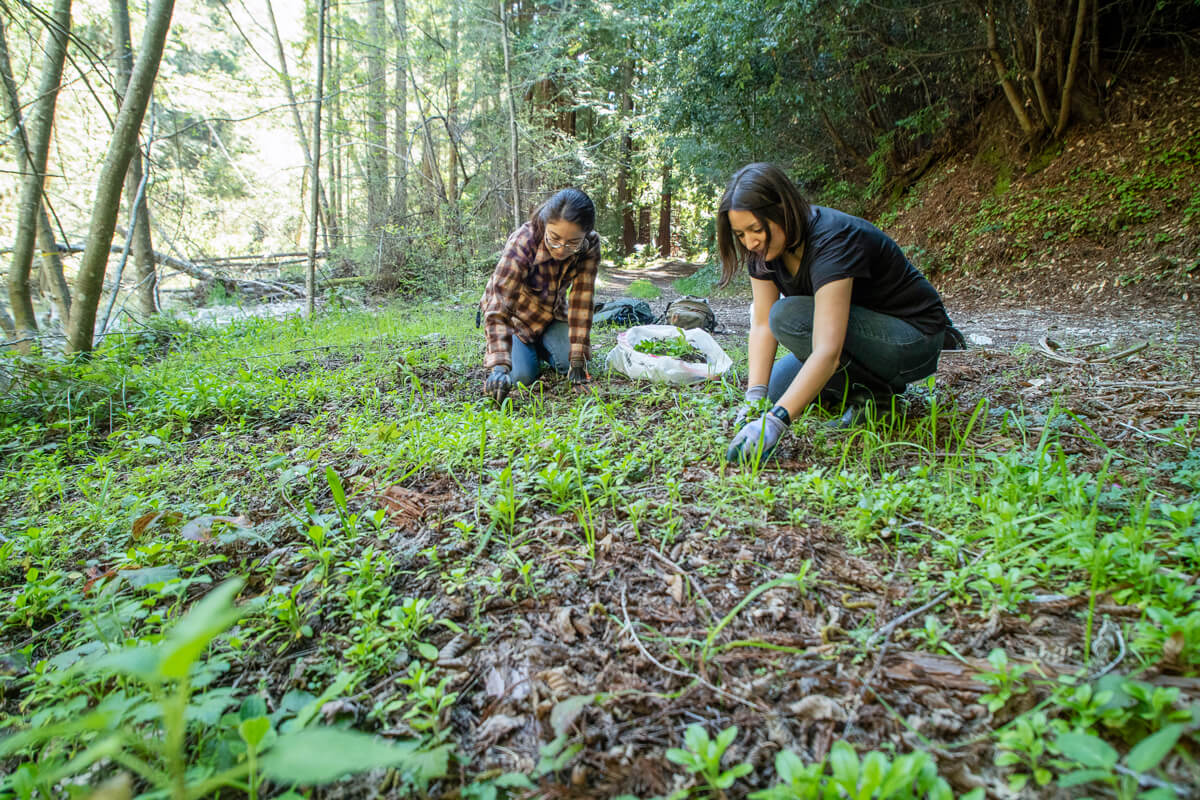
Beatrix and UCSC intern Mariana Macomber, who also cared for the seedlings at the greenhouse, remove invasive plants at San Vicente Redwoods, by Ian Bornarth.
It Starts With Seed
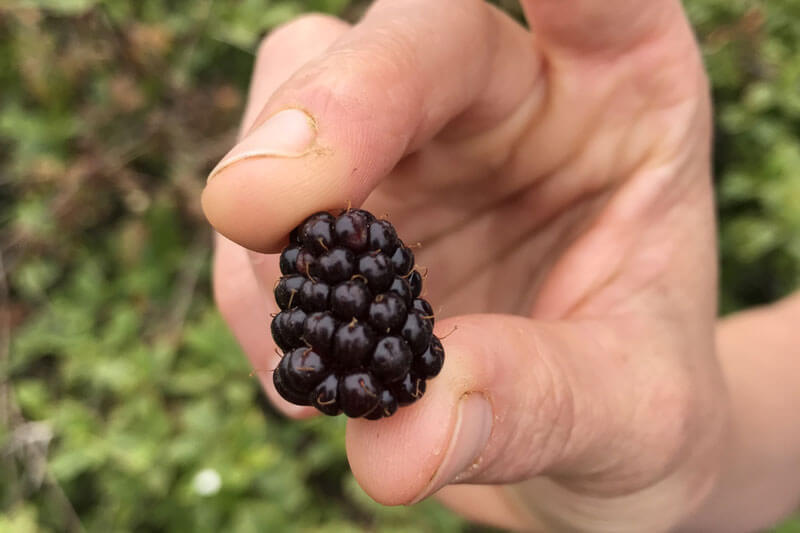
California blackberry, by zias.
To restore native plants for the myriad of benefits they perform, we start by collecting seeds from existing plants on a property. In 2017, Ian Rowbotham, Sempervirens Fund’s Senior Land Stewardship Manager, and interns from University of California Santa Cruz (UCSC) gathered seeds and berries at San Vicente Redwoods from California blackberries (Rubus ursinus), western thimbleberries (Rubus parviflorus), monkeyflower (Diplacus aurantiacus), and elk clovers (Aralia californica). They delivered the botanical bounty to the UCSC Greenhouse, where Greenhouse Director Sylvie Childress and her team mimic the natural process of seed dispersal.
In the case of berries, that means imitating digestion–which, hang on, isn’t as bad as it sounds. Sylvie explains the berries are squished on paper to retrieve the seeds for washing in a sieve. But even once clean, the seeds aren’t ready to sprout. “They have germination inhibitors, so they are sown in a flat of soil and cold stratified in a refrigerator for about two to three months until they sprout,” Sylvie says. The seeds are checked frequently by Sylvie and her team because once they start to germinate, they need the sun. The little sprouting seeds are ready to pot.
The Phytosanitary Process
The potting process Sylvie and her team use for restoration plants like the seedlings isn’t so dissimilar to a medical team preparing for a procedure and that’s because the goal is to prevent the spread of disease. Pathogens like Sudden Oak Death can spread quickly through the forest and can be introduced into the wild from commercial potted plants, Sylvie says. So, when seeking to restore a habitat, it's critical the planting effort doesn’t do more harm to the forest than good.
The seedlings’ pots and tools are washed and sanitized before potting, only brand-new soil is used, and the newly potted plants are grown up off the ground so they aren’t splashed with water that can also carry Sudden Oak Death. “Phytosanitary processes are more costly but necessary,” Sylvie explains. And its helpful training for the students who frequently enter the restoration field after their time at UCSC.
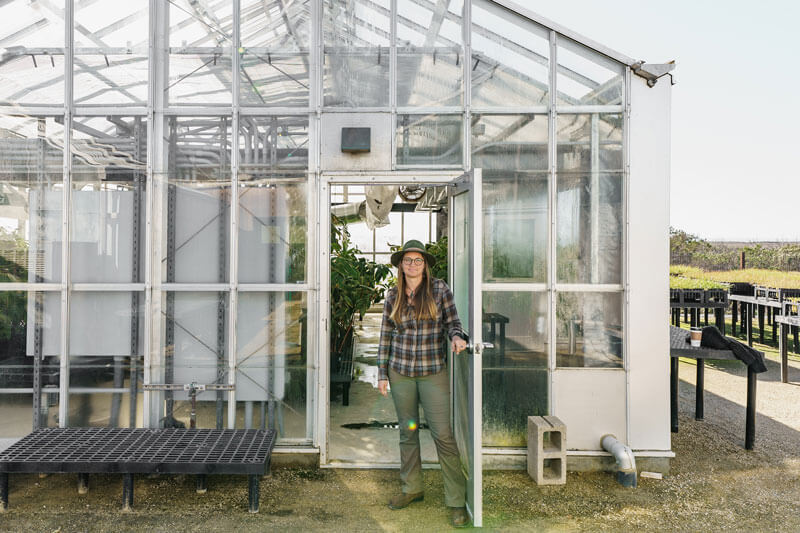
Sylvie Childress, UCSC Greenhouse Director, by Orenda Randuch.
From Stubby Pots to Setbacks
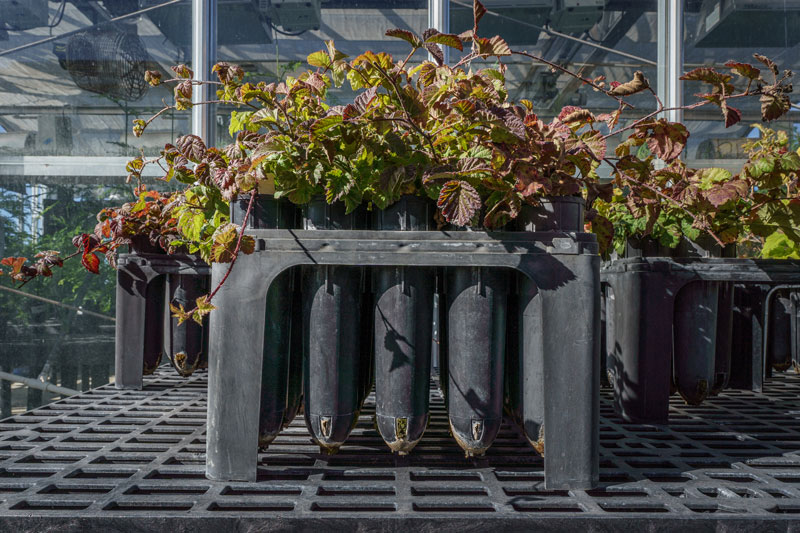
California blackberry seedlings in D-pots, by Orenda Randuch.
Each sprouting seed gets a “stubby” pot to call its own. Stubby pots are frequently used for restoration plants, Sylvie says, because they take up much less space. “You can get almost 100 per rack.” Space that becomes rather more crucial as time goes on. Now potted, the seedlings would grow in the sun for another few months to round out their typical 6-month stay at the rooftop garden of the main campus’ instructional facility.
Typically, this is perfect timing to be planted late in the fall to soak up the winter rains. And a few plants were able to do just that–”outplanted” by interns at San Vicente Redwoods. But before all of the seedlings could be planted, the first disaster struck and COVID-19 rocked the world putting in-person programs like plantings–that would often necessitate riding in the same vehicle capable of navigating the rural dirt roads crisscrossing the property–on hiatus.
Lightning Strikes
Normally, these seedlings would have been planted in the forest as soon as they started to sprout. But care for the plants went on at the greenhouse, with nearly 300 remaining sprouts forced to wait out the pandemic in what might be likened to a seedling spa. While the pandemic was in full swing, lightning literally struck, igniting the CZU Fire which burned through 86,000 acres in the Santa Cruz mountains region including the seedlings home–San Vicente Redwoods–delaying their planting by another couple winters as the forest stabilized and began to recover.
All the while, the seedlings are growing and the stubby pots, ideal for plants making a quick transition out into the field, are much too small. “After their first year in those small pots, we needed to upsize them to the larger ‘D Pots’, which fit 20 per rack, in order to hold them for the time it took until they were planted out,” Sylvie explains. After a professional re-potting, the seedlings were better prepared for the long haul.
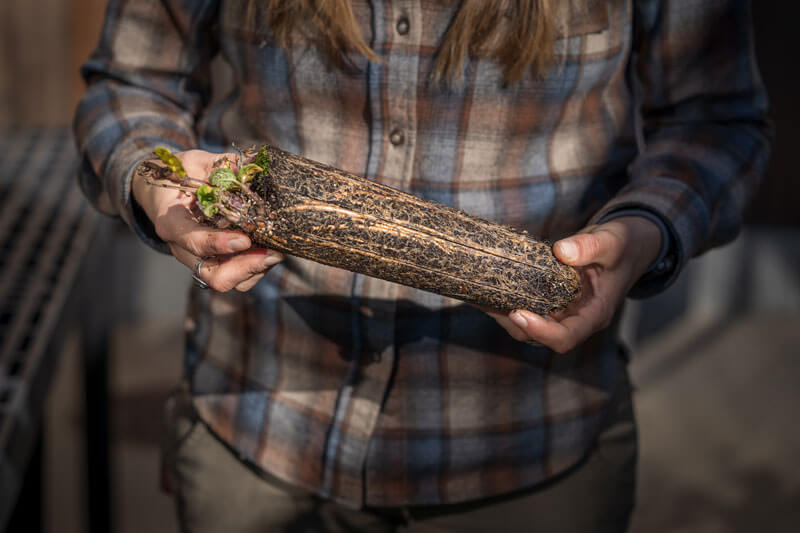
Elks clover roots, by Orenda Randuch.
“They’ve been in these pots for many years,” Sylvie says, “but the roots are staying healthy.” Their good condition is likely because of their good fortune of being at the greenhouse where they have been patiently cared for by about 50 student employees and intern experts over the years–fertilizing and pruning at “just the right time”.
Each seedling is pruned two to three times a year when it looks “crammed or less healthy” and fertilizers are diversified including liquid fertilizers as often as monthly and granular slower-release fertilizers every few months. All the while they’re being plant-pampered, our Field Operations Manager Melisa Cambron Perez points out their root systems have been able to grow and the seedlings have been able to mature through several seasons before facing the challenges that lie ahead in nature.
By The Numbers
Great Survival Rate
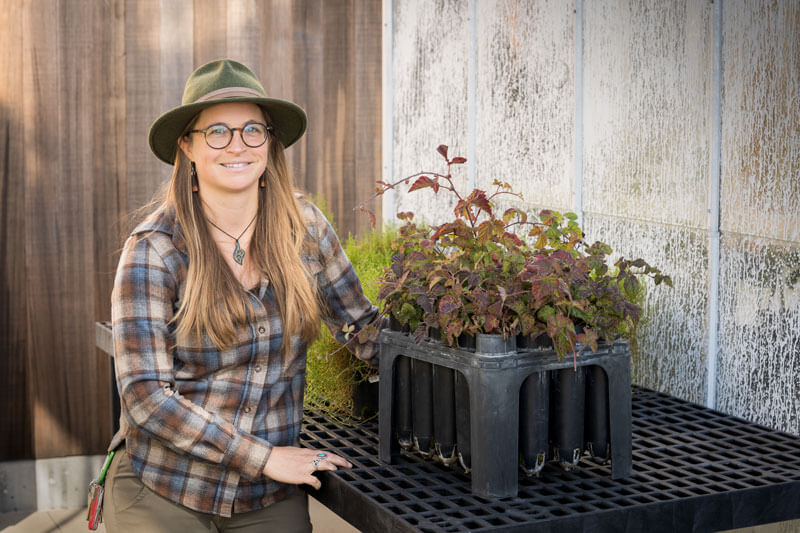
Sylvie with California blackberries, by Orenda Randuch.
For seedlings in pots, Sylvie says they’ve had a great survival rate, especially for plants that have stayed at the greenhouse much longer than other guests in her experience. In fact, these seedlings have been at the greenhouse nearly as long as Sylvie has.
Typically, when propagating plants for restoration projects, she would grow about 10% more plants than are needed to ensure enough survive for the project. However, she is less familiar with the plant’s survival rates once they leave her care. For that, we turn to our Natural Resource Manager Beatrix Jiménez-Helsley. “Plant survivorship varies greatly, and is more unpredictable during today’s climate which has shown to swing from heat waves like we saw in Winter 2022 to bomb cyclones like we’re seeing in Winter 2023,” she says. “Because of this, my guesstimate is 25% of these will survive.”
Plant Problems
While being in pots for so long has been one of the primary challenges during their time at the greenhouse, Sylvie, like Beatrix, notes that unpredictable weather will be one of the largest challenges ahead for seedlings in nature. And for 240 seedlings, this winter was when they were finally reintroduced to nature and the problems it can pose for a plant.
Twenty California blackberries and 40 western thimbleberries were planted at the new entrance to San Vicente Redwoods to help with regeneration and stabilization after construction, 50 elk clovers were planted along newly repaired crossings at Little Creek to help regeneration, and 50 elk clovers were planted alongside a stream that feeds into Mill Creek to help shade and cool it's crucial recovering endangered coho salmon spawning habitat. But the very things they were tasked to help remedy may have become the most imminent threat to the seedlings’ survival.
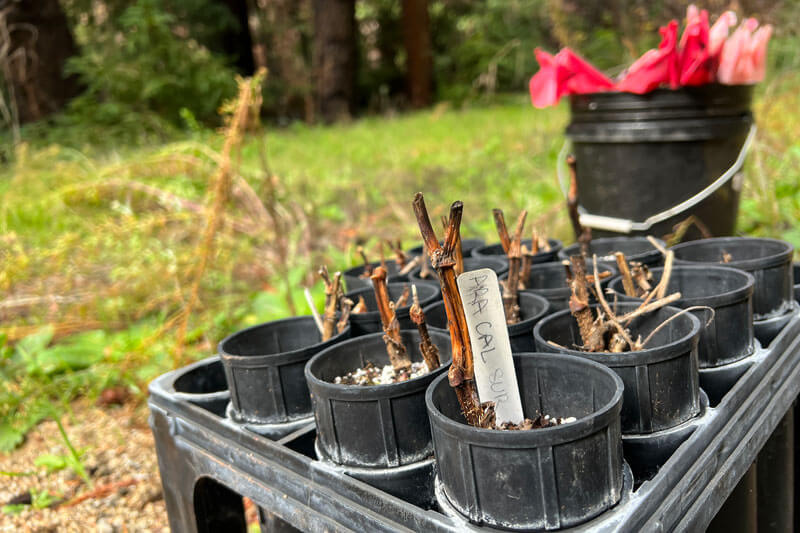
Elks clover at San Vicente Redwoods, by Melisa Cambron Perez.
The seedlings at the parking lot looked good, Beatrix said. But that was before the January storms–the deluge of atmospheric rivers, flooding, and bomb cyclones that hit the coast beginning on New Years 2023. Melisa notes the elk clovers planted near the waterways could be washed out from heavy storms–which isn’t difficult to imagine after seeing coverage of entire sections of road being washed away, despite the advantage of getting to develop their root system at the greenhouse for years.
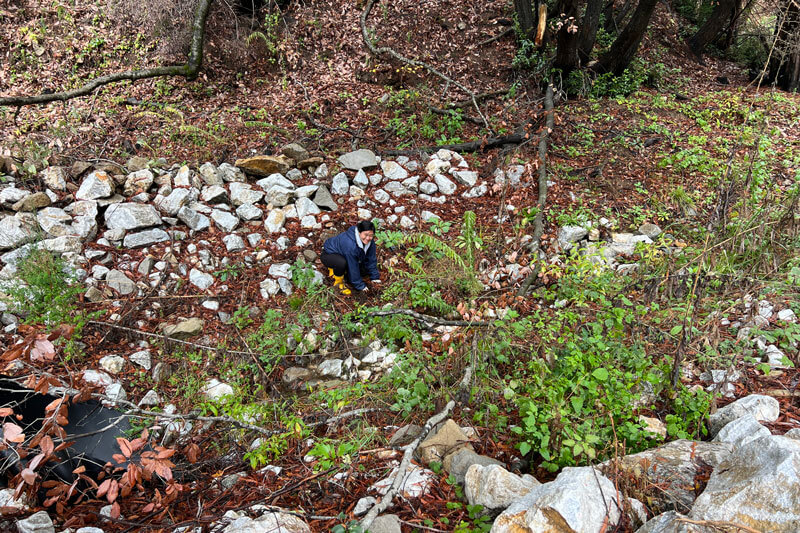
Planting at San Vicente Redwoods, by Melisa Cambron Perez.
Beatrix agrees, “the elks clover planted along tributaries can be washed out from huge rains and high stream flows.” And the berries may be at risk too she points out, “the California blackberries and western thimbleberries at the parking lot were planted on slopes to help with stabilization, however, with the unexpected dump of rain, they may not have developed an extensive root system yet and are vulnerable to erosion,” Beatrix explains.
These storms aren’t just a threat to the planted seedlings either. They are also the third disaster delaying the remaining 50 seedlings from being planted at San Vicente Redwoods. The severe storms have oversaturated roads which not only prevents our team from checking on the planted seedlings it also prevents the final plantings, Melisa explains. “If the roads are too wet, then driving on them can cause damage which would in turn lead to more repairs in the future,” she said.
But the storm has also created major safety concerns, made exponentially greater because of the 2020 CZU Fire. “Given the high fire severity San Vicente Redwoods faced, a lot of trees don't have strong root systems to hold them steady in oversaturated soil and high winds, and trees have started falling–blocking roads.” Melisa continued, “ live trees have also had their tops blown off due to heavy winds–making a potential planting area too dangerous to access.”
Many parks in the Santa Cruz mountains are facing similar challenges as the storm compounds fire recovery conditions adding extra erosion, mudslides and falling trees to the mix, and temporarily closing many parks including San Vicente Redwoods while safety is assessed. With any luck, blackberries and thimbleberries will greet visitors when the gate reopens.
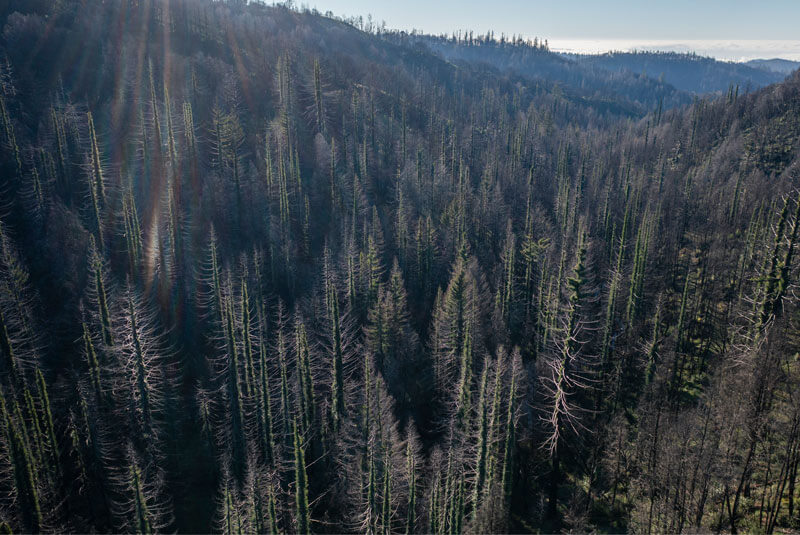
San Vicente Redwoods' fire recovery, by Teddy Miller.
Berry Beneficial
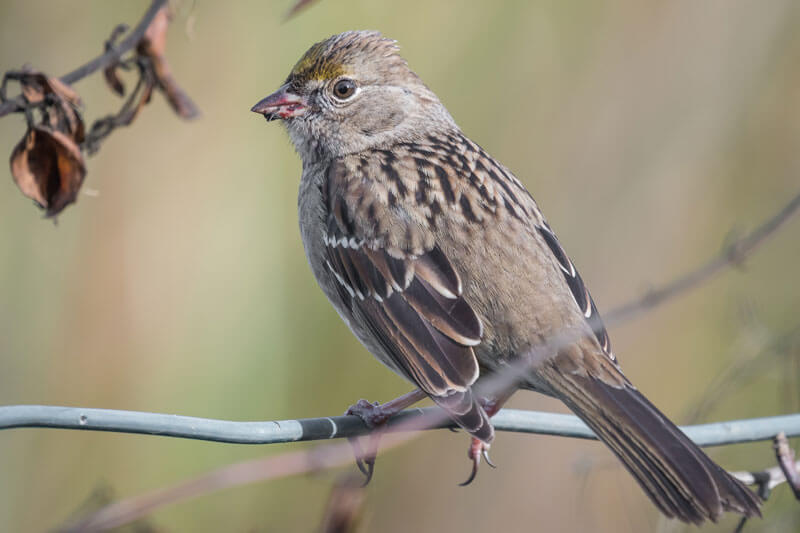
Golden-crowned sparrow with a blackberry smeared bill, by Becky Matsubara.
California blackberry, western thimbleberry, and elk clovers all produce edible berries that creatures can forage, Beatrix says. Their flowers can support more than one hundred different species of pollinators like moths and butterflies. They provide shade and shelter for native species. “The California blackberry can form thickets that offer protective cover to small mammals like brush rabbits and offer good nesting sites for small birds,” Beatrix explains.
California blackberries have very gentle prickles, Sylvie demonstrates by running her hand gently along them, compared to the invasive Himalayan blackberries’ giant prickles. But the Himalayan variety can be found all over the Santa Cruz mountains in part because it also has larger berries which attract birds and people alike.
California vs. Himalayan Blackberry
While all plants compete for light and nutrients,”the biggest competitors are non-native plants,” Beatrix says. Invasive plants like the Himalayan blackberry pose the biggest challenge to the seedlings’ survival. Without an ecosystem coevolved to balance it, such as animals and insects that want to eat it, little to nothing stands in the invasive plant’s way. Hopefully, the extra growth the seedlings got during their years of favorable conditions at the greenhouse will help them withstand the non-native competition because when coupled with exposure to the elements, their growth will likely be slower in the forest, Beatrix states.
Growing the Forest
Native plantings like these help support the forest understory by supporting abiotic factors of the ecosystem–like sunlight, minerals, water, and soil–and biotic-living factors in the ecosystem. “The plants themselves, such as the elk clovers and western thimbleberry, have large leaflets which can provide shade and cooling for the soil and water on the forest floor,” Beatrix illustrates. Even underground the seedlings’ roots can provide structural support for the soil–decreasing erosion–and their root decomposition sequesters carbon. “They provide food, shelter, and habitat for resident species,” Beatrix says.
Once the roads are safe and the weather calm, Beatrix and Melisa will check on the planted seedlings and resume plans to plant the remaining 50 western thimbleberries at the UCSC greenhouse so they can help the land recover from fire, restore native habitat, and help brace the soil for the droughts, floods and fires to come.
For now the seedlings sit in pots outside a greenhouse of young redwoods, where a graduate student is working to better understand how redwoods cope with drought–information that will be invaluable for helping redwoods survive the climate changes ahead.
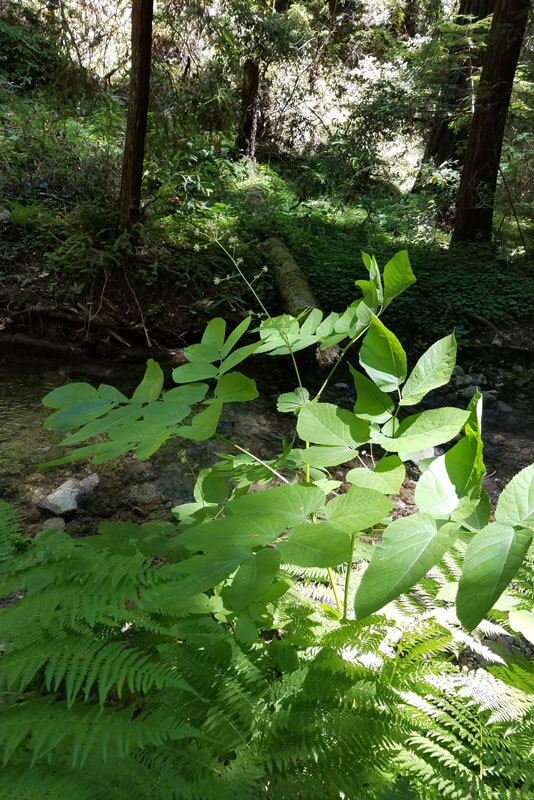
Mature elks clover shades a creek, by Ken Koll.
Stay tuned for an update on the Saga of the Seedlings. You can also make an impact for forest resiliency with a gift to Grow the Forest.
More to Explore
- Read about redwood seedlings restoring habitat at San Vicente Redwoods
- Learn more about San Vicente Redwoods
- Read more about the redwood fire recovery timeline in Nature Needs Time to Heal
